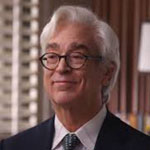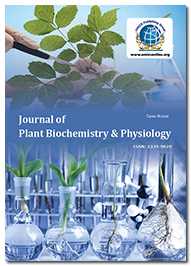Theme: Unwinding Nature’s Recipes for Health
Herbals Summit 2015
Welcome Message from Dr. Russ Jaffe

Come join us in the celebration and communion at Herbals Summit 2015.

yours sincerely,
Dr. Russ Jaffe MD, PhD
Founder / Chief Executive Officer
Fellow, Health Studies Collegium
PERQUE Integrative Health
We welcome all the participants to the International Summit on Herbals and Natural Remedies held during October 26-27, 2015 at Chicago, USA.
We invite all the herbalists, alternative and complementary medicine practitioners, researchers in the field of Phytomedicine, Pharmacognosy, Ayurveda, Naturopathy, people who believe in natural remedies to explore their research, case studies and practitioners of natural medicine at Herbals Summit 2015.
This international meet anticipates hundreds of delegates including international keynote lectures and oral presentations by renowned speakers and poster presentations by students, Herbal Exhibitions and delegates all around the world which will craft a platform for global promotion of safe and effective natural therapies. It provides international networking and opportunities for collaborations with worldwide companies and industries.
This global event will be an excellent opportunity for the Herbalists and alternative practitioners to encourage the profound administration of herbs as medicament and explore the best case reports where ultimate results to justify curing and healing by various herbals to various ailments has been noted with evidence and proving herbals to be the righteous option for treating chronic ailments.
Recent advances in Herbs and Natural Remedies
Recent advances in Herbs and Natural Remedies will enrich Newest discoveries and latest breakthroughs in natural medicine the knowledge of Phytomedicine, Pharmacognosy , Ayurveda, Naturopathy, Traditional Medicine, Siddha, Unani & Materiamedica as applied to clinical cases, and expand the skills for evaluation of phytoconsituents and their effective formulation. Advances in biotechnology and Nutraceuticals will be ideal for all researchers belonging to herbal medicine, research scientist, clinicians, including formulators, who use, or want to use, herbal prescriptions as key components to treating disease and reclaiming health.
Ayurveda-The Science of Eight Components
Ayurvedic medicine is a system of traditional Hindu medicine native to the Indian subcontinent. Contemporary practices derived from Ayurvedic traditions are a type of alternative medicine. Ayurvedic practices include the use of herbal medicines, mineral or metal supplementation, surgical techniques, opium, and application of oil by massages.
Botanical Medicines for Prevention and Treatment
They are plants (or substances that come from plants) that are used to treat or prevent disease. Plants have been used in this way in all cultures from pre-history on. We call them botanicals because, technically, the term botanical medicine is more inclusive and includes plant parts that are not strictly herbs, such as bark, seeds, roots, and stems. Botanical medicines sometimes called dietary supplements. They are used in treating various infections.
Herbs play a major role in treatment of cancer and there are more than twenty herbs that just might help your fight against cancer. Herbal Tea helps in Curing Cancers. Exercise, massage, relaxation techniques, yoga, Acupuncture are some of alternative treatments for cancer. Some of the herbs are ASTRAGALUS, BERBERIS FAMILY (e.g. Podophyllum peltanum), BLOODROOT (Sanguinaria canadensis), BUTCHERS BROOM (Ruscus aculeatus), CAT´S CLAW (Uncaria tormentosa), CHAPARRAL (Larrea mexicana), CURCUMIN (Turmeric), DANG SHEN ROOT (Codonopsis pilosula), ECHINACEA, FEVERFEW, GOLDENSEAL, MILK THISTLE, PAU D´ARCO, RED CLOVER, SHEEP´S SORRELL, SKULLCAP (Scutellaria barbata), SUTHERLANDIA (Cancer Bush), THOROWAX, or HARES EAR (Bulpleurum scorzoneraefolium), WHEATGRASS, WORMWOOD.
Mostly includes Ethno botany, Natural product chemistry, Biological activity and toxicity of herbals Medicinal plants are important sources for pharmaceutical manufacturing. Medicinal plants have been identified and used throughout human history. Supply chain management and value addition of MAPs Plants have the ability to synthesize a wide variety of chemical compounds that are used in cure various diseases. Mostly they are used in herbal therapies, tratidional medicine practioners. They are also which are used in making perfumes, in cooking, and in the food, pharmaceutical, and liquor industries. Many aromatic plants are species of the Lauraceae, Umbelliferae, Myrtaceae, and Labiatae families. In the USSR roses, geraniums, laurel, lavender, and rosemary are among the plants used in industry. Quality control standardization and certification of medicinal plants and herbal products is very important. Ginseng is perhaps the most widely recognized plant used in traditional medicine and now plays a major role in herbal health care. Through the ages, the root has been used in the treatment of loss of strength, hardened arteries, blood and bleeding disorders, and colitis, and to relieve the symptoms of aging, cancer, and senility.
Herbal Medicine- Importance and Usage
The study or use of medicinal herbs to prevent and treat diseases and ailments or to promote health and healing. Herbal medicine is also called as Botanicals, Phytotherapy. A growing field with a long tradition. It is the oldest and most widely used system of medicine in the world today. It is used in all societies and is common to all cultures. The art or practice of using herbs and herbal remedies to maintain health and to prevent, alleviate, or cure disease—called also herbalism. They are used for treating anxiety, depression, Healing, ache and many more. There are different types of herbs like Anti Inflammatory Herbs, Smoking Herbs, Fertility Herbs, Adoptogenic herbs, Healing Herbs. There are also different types of herbal products used in various forms some of them are Herbal Tea, Herbal Hair Products, Herbal Cigarettes, Herbal Antibiotics, and Herbal Toothpastes.
Therapeutic Considerations for Herbs
Dietary supplements are among the most commonly used com-plementary and alternative medical therapies. A large number of herbs (e.g. garlic, mistletoe, Essiac, Lingzhi, and astragalus) are used by cancer patients for treating the cancer and/or reducing the toxicities of chemotherapeutic drugs. Some herbal medicines have shown potentially beneficial effects on cancer progression and may ameliorate chemotherapy-induced toxicities.
Herbal Therapies for Prevention and Treatment
Herbal Therapies plays an important role in the treatment of various diseases from ancient times. Herbal treatment in dentistry, ophthalmology, nephrology and gastroenterology, Herbal treatment in gynecology (Herbal Abortions), oncology, stem cell culture and reproductive health Herbal treatment in infectious, rheumatic and cardiovascular diseases, Herbal treatment in the treatment of obesity and hormonal disorders, Herbal Laxatives are used to treat constipation. People use herbal home remedies to try to maintain or improve their health. They treat various heart problems. Herbals are used in Addiction Therapy, Herbal Remedies for Depression.
Naturopathy or naturopathic medicine is a form of alternative medicine. It includes wide range of natural treatments, including homeopathy, herbalism, and acupuncture, as well as diet and lifestyle counseling. The practice of naturopathic medicine includes modern and traditional, scientific, and empirical methods, Chiropratic . Naturopathic practice includes clinical and laboratory diagnostic testing, nutritional medicine, botanical medicine, naturopathic physical medicine (including naturopathic manipulative therapy), public health measures, hygiene, counseling, minor surgery, homeopathy, acupuncture, prescription medication, intravenous and injection therapy, and naturopathic obstetrics (natural childbirth).
Homeopathy was invented by Samuel Christian Hahnemann (1755-1843). Homeopathy is a safe, gentle, and natural system of healing that works with your body to relieve symptoms, restore itself, and improve your overall health. It is extremely safe to use, even with very small children and pets, has none of the side effects of many traditional medications, is very affordable, is made from natural substances, and is FDA regulated. Homeopathic medicine is based on three central tenets they are the law of similars, ionfinitessminals and the law of successions.
Antimicrobial and antifungal properties of plants and essential oils
Essential oils have been widely used in treatment of various diseased. Essential oils are prevalent in many medicinal plants used for oral hygiene and treatment of diseases. Use of Essential Oils Blends in the Massage Therapy and Lymphatic drainage practice is crucial. Essential oils, odorous and volatile products of plant secondary metabolism, have a wide application in folk medicine, food flavouring and preservation as well as in fragrance industries. The antimicrobial properties of essential oils have been known for many centuries. In recent years (1987-2001), a large number of essential oils and their constituents have been investigated for their antimicrobial properties against some bacteria and fungi in more than 500 reports.
The Quality Assurance in Cosmetics and Skincare
Several herbal products are used in Cosmetics and Natural Skincare Ingredients and herbal Intermediates, their practical applications in Skincare and Cosmetics. Need to attain and meet certain guidelines in Quality Assurance check. Certain Cosmetic products are subject to legislative requirements in many countries, to maintain a competitive advantage; you are continually developing products through evaluation and reformulation.
Traditional Chinese medicine originated in ancient China and has evolved over thousands of years. Traditional Chinese Medicine is a system of primary health care that includes acupuncture, Chinese herbal medicine, remedial massage, exercise and breathing therapy and diet and lifestyle advice. In Australia, the most popular forms of TCM health care are acupuncture and Chinese herbal medicine. It has an uninterrupted history of development in China and other parts of East Asia dating back thousands of years.
Nurse practitioners (NPs) frequently recommend weight loss as a health promotion/risk reduction strategy. Herbal products are widely marketed for their weight loss properties, and patients often query practitioners about their effectiveness and safety. While herbs are not a panacea, they can be used as foods or medicines to complement and support diet and exercise interventions.
Market Analysis of Herbal Medicine Globally
Over the past decade, herbal medicine has become a topic of increasing global importance, with both medical and economic implications. In developing countries, as much as 80% of the indigenous populations depend on traditional systems of medicine and medicinal plants as their primary source of healthcare.
The global herbal supplements and remedies market is to hit $93.15 billion by 2015. According to research from Global Industry Analysts the global herbal supplement and remedy industry is forecast to exceed $105 billion by 2017. Over the past ten-year period, the market has recorded strong growth, relatively unaffected by the economic recession
In 2008 global market for herbal remedies across all segments currently brings in about $83 billion. Depending on the segment, growth is steady, ranging between 3% and 12%. Herbal dietary supplements ($11 billion) and herbal functional foods ($14 billion) make up over a third of the market. The global herbal pharmaceutical industry (including drugs from herbal precursors and registered herbal medicine) contributes $44 billion. Herbal beauty products make up the remaining $14 billion of the market. In the global cosmetics market, herbal ingredients are estimated to have a 6% share of the market, and are exhibiting the strongest growth, between 8% and 12 %.
Graphical Representation of Global Herbal Market

According to research from Global Industry Analysts the global herbal supplement and remedy industry is forecast to exceed $105 billion by 2017.
Global Herbal Medicines Market In Terms Of Geography

In terms of geography, the global herbal medicines/ supplement market is divided among Germany (28%), Asia (19%), Japan (17%), France (13%), Rest of Europe (12%) and North America (11%).
Market Analysis of Herbal Medicine in USA
U.S. In 2005, U.S. herb and botanical sales were at $4.4 billion, with an estimated growth rate of nearly 4%. In 2006, sales grew to $4.6 billion. Sales increased by 4.5% in 2011, reaching a total estimated figure of nearly $5.3 billion (USD). In 2012, the sales were nearly $5.6 billion (USD) with a growth of 5.5%.Sales of herbal dietary supplements in the United States increased by 7.9% in 2013, reaching a total estimated figure of six billion dollars for the first time. This type of growth is expected to continue.

Conference Highlights
- Recent Advances in Herbs and Natural Remedies
- Ayurveda-The Science of Eight Components
- Botanical Medicines for Prevention and Treatment
- Herbals in Cancer Therapy
- Medicinal & Aromatic Plants
- Herbal Medicine-Importance and Usage
- Therapeutic Considerations for Herbs
- Herbal Therapies for Prevention and Treatment
- Naturopathy
- Homeopathy
- Antimicrobial and Antifungal Properties of Plants and Essential Oils
- The Quality Assurance in Cosmetics and Skincare
- Traditional Medicine
To share your views and research, please click here to register for the Conference.
To Collaborate Scientific Professionals around the World
| Conference Date | October 26-27, 2015 | ||
| Sponsors & Exhibitors |
|
||
| Speaker Opportunity Closed | Day 1 | Day 2 | |
| Poster Opportunity Closed | Click Here to View | ||
Useful Links
Special Issues
All accepted abstracts will be published in respective Our International Journals.
- Medicinal & Aromatic Plants
- Alternative & Integrative Medicine
- Journal of Plant Biochemistry & Physiology
Abstracts will be provided with Digital Object Identifier by



















